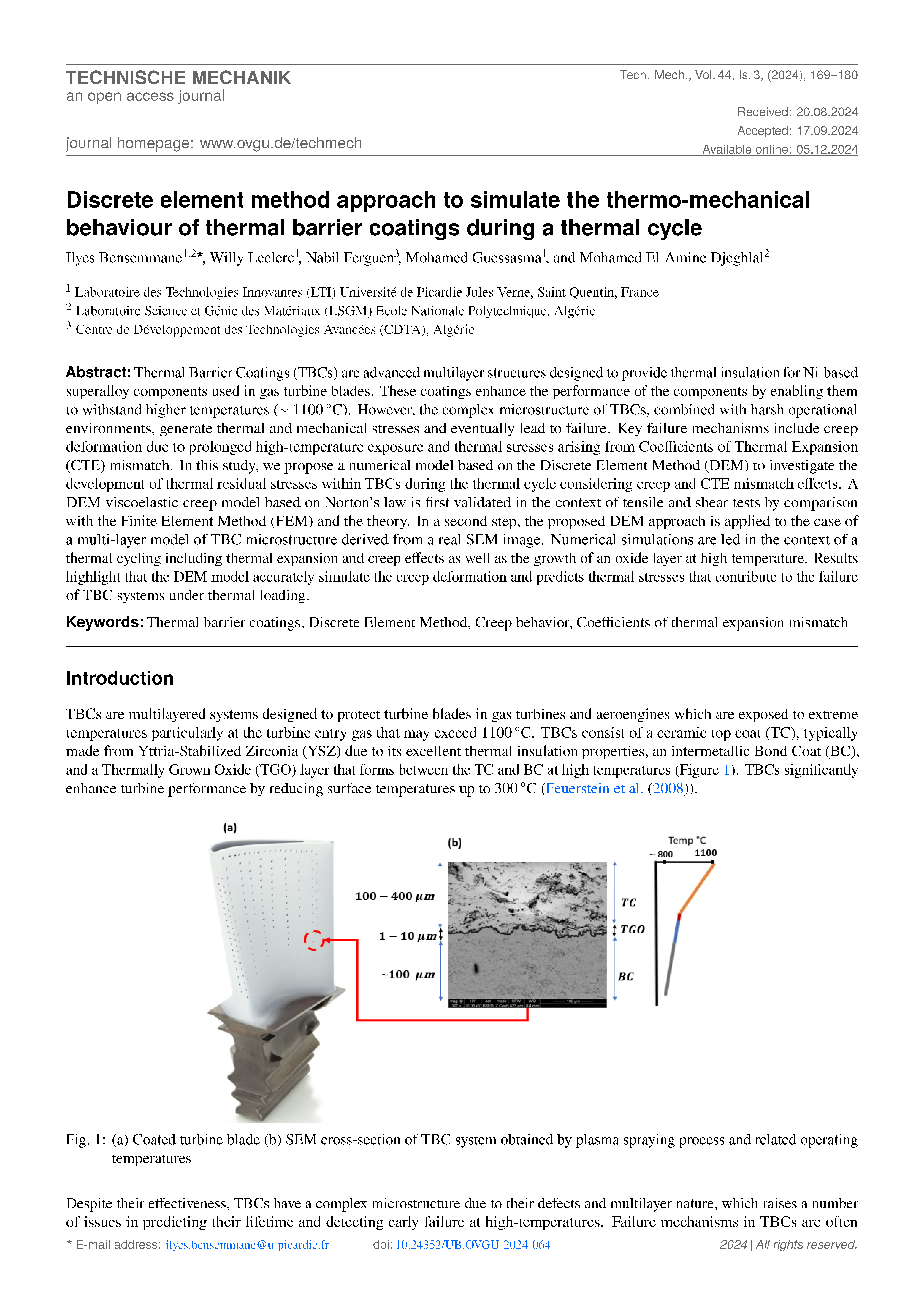Discrete element method approach to simulate the thermo-mechanical behaviour of thermal barrier coatings during a thermal cycle
DOI:
https://doi.org/10.24352/UB.OVGU-2024-064Keywords:
Thermal barrier coatings, Discrete Element Method, creep behaviour, Coefficients of thermal expansion mismatchAbstract
Thermal Barrier Coatings (TBCs) are advanced multilayer structures designed to provide thermal insulation for Ni-based
superalloy components used in gas turbine blades. These coatings enhance the performance of the components by enabling them
to withstand higher temperatures (∼ 1100 ° C). However, the complex microstructure of TBCs, combined with harsh operational
environments, generate thermal and mechanical stresses and eventually lead to failure. Key failure mechanisms include creep
deformation due to prolonged high-temperature exposure and thermal stresses arising from Coefficients of Thermal Expansion
(CTE) mismatch. In this study, we propose a numerical model based on the Discrete Element Method (DEM) to investigate the
development of thermal residual stresses within TBCs during the thermal cycle considering creep and CTE mismatch effects. A
DEM viscoelastic creep model based on Norton’s law is first validated in the context of tensile and shear tests by comparison
with the Finite Element Method (FEM) and the theory. In a second step, the proposed DEM approach is applied to the case of
a multi-layer model of TBC microstructure derived from a real SEM image. Numerical simulations are led in the context of a
thermal cycling including thermal expansion and creep effects as well as the growth of an oxide layer at high temperature. Results
highlight that the DEM model accurately simulate the creep deformation and predicts thermal stresses that contribute to the failure
of TBC systems under thermal loading.

Downloads
Published
How to Cite
Issue
Section
License
Copyright (c) 2024 Ilyes Bensemmane, Willy Leclerc, Mohamed Guessasma, Nabil Ferguen, Mohamed Elamine Djeghlal

This work is licensed under a Creative Commons Attribution-ShareAlike 4.0 International License.




